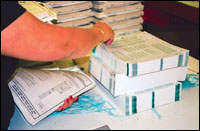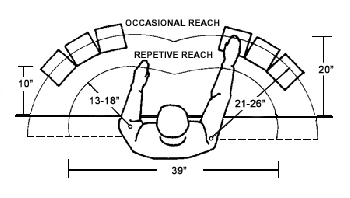The ‘fully automated print shop’, where there are minimal human touches in a job workflow, is a worthy ideal. The grim reality is, I suspect, a little messier. No matter how much modern automated pre-press, printing and bindery equipment you have in your shop, I’ll wager there are days when your staff has to actually pick up sheets of paper and collate, fold, glue, insert or assemble by hand.
Rush jobs or equipment downtime will see to that. The more things change in the bindery, the more they stay the same. In fact our most-viewed Bindery Success blog post to date involves hand work—How to fold digital printing jobs fast without a folding machine. There must be a good reason for that!
The reality also is that the short runs prevalent in our digital world are sometimes easier and faster to process by hand. So, you might as well prepare for the inevitable hand work and train your bindery staff to do it correctly.
If you’ve done your share of repetitive hand work, you know that minor changes in technique or posture can make a huge difference in productivity. The right technique can also prevent injuries and will have you and your staff going home feeling a lot better physically than you might otherwise. In its 41 years of collecting and analyzing injury data, OSHA has developed some common-sense injury-prevention tactics for numerous industries including print finishing.
You may not know this, but OSHA has even found hazards in the actions of a seemingly harmless task like hand collating and assembly. OSHA defines a hazard as “the potential for harm. In practical terms, a hazard often is associated with a condition or activity that, if left uncontrolled, can result in an injury or illness.” Some simple actions found in hand work include:
 Repeated reaching to stacks of signatures or sheets. The photo at right shows an awkward hand-over-hand reach.
Repeated reaching to stacks of signatures or sheets. The photo at right shows an awkward hand-over-hand reach.- Repeated elevated reaching when stacks are too high
- Repeated pinching with thumb and fingers to pick up sheets of paper
- Prolonged standing
- Neck and torso bending to reach stacks that are too low
Over time these can result in various muscle stresses and strains, back injury and carpal tunnel syndrome. Of course if you’re automating printing and bindery processes anyway, this type of work will be intermittent. Nevertheless, why risk injury at all if prevention is simple?
Some tips to reduce the hazards of hand collating:
 Place materials within reach so that workers can reach product without fully pulling the arm away from the body. The diagram illustrates suggested guidelines to accomplish this.
Place materials within reach so that workers can reach product without fully pulling the arm away from the body. The diagram illustrates suggested guidelines to accomplish this.- Adjust work height to minimize neck and torso bending. Adjustable tables and workstations can allow the worker can stand straight and keep elbows close to the body.
- Provide mats to stand on and encourage the use of shoe insoles.
- Use rubber fingers or a fingertip moistener to make sheet retrieval easier (and faster)
- Use a sit/stand stool to allow a change of posture or provide a footrest so the worker can alternate feet and improve blood circulation
- Rotate staff when possible to reduce exposure time to tedious tasks
In all likelihood nothing will ever happen during an occasional hand-collating or assembly job. But there is no reason to take a chance. If hand work is a normal part of your work day then by all means it pays to minimize the hazards.
The flip side of the ‘hazard’ coin is that reducing hazards will likely have the effect of increasing bindery productivity. After all, if there is less stress and strain on the body, it will be able to produce more for longer periods of time. It’s a bindery win-win.
Feel free to comment or share your own experiences and ideas below.

